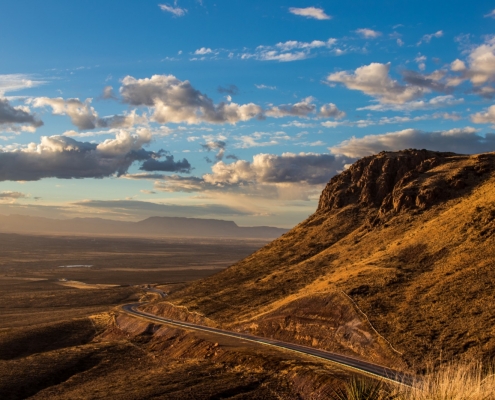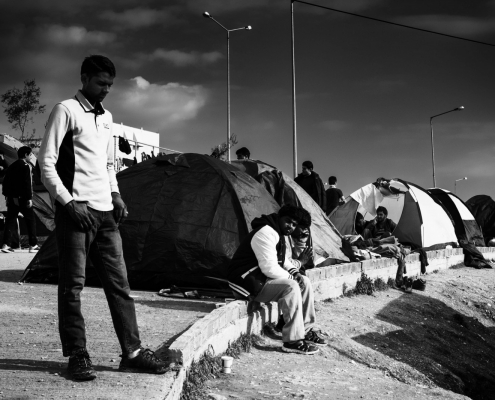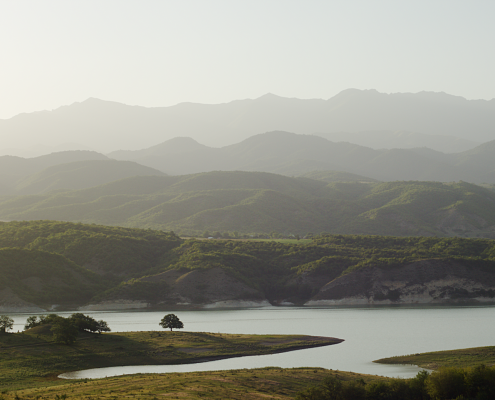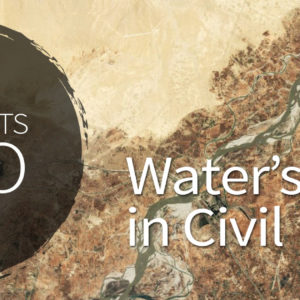January 17, 2018/ by Brett Walton
Environmental change viewed as a leading cause of disruption.
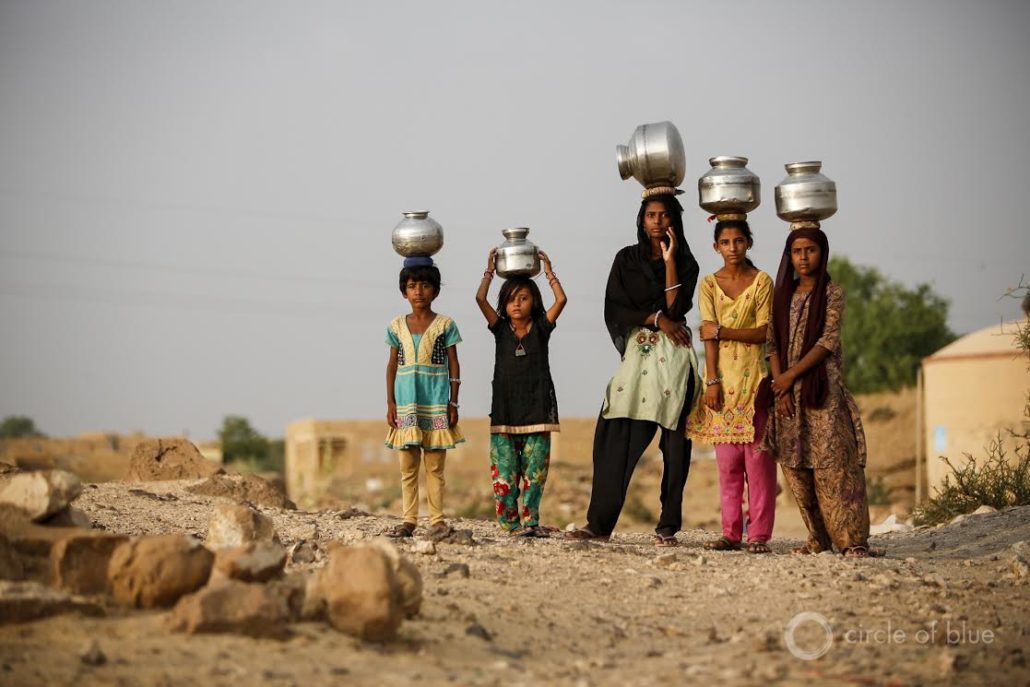
© J. Carl Ganter / Circle of Blue
By Brett Walton, Circle of Blue
Following a year in which Hurricane Maria destroyed Puerto Rico’s power and water grids and Cape Town stepped to the edge of a water supply disaster, the world’s business, political, and academic elite warn of social and economic upheaval from water and climate hazards.
Environmental risks have steadily grown in prominence in the World Economic Forum’s Global Risks Report as damage to the planet’s land, air, and water — its biological and physical support systems — has become more noticeable.
The 13th annual risks report, compiled from surveys of its members and affiliates, divides risks into two categories: those that are most likely and those that are most destructive.
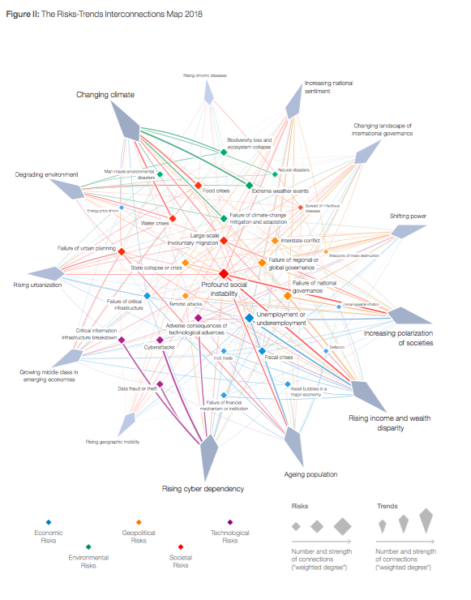 Click for larger image
Click for larger image
For high-probability risks, extreme weather and natural disasters took the top two spots, ranking above cyberattacks and data fraud. Survey respondents were asked to evaluate 30 economic, environmental, societal, technological, and geopolitical perils.
Four of the top five risks for “impact” are environmental: extreme weather events, natural disasters, failure to adapt to climate change, and water crises. One could argue, in fact, that they are all facets of the same sharp stone. The top risk for impact — weapons of mass destruction — rose to prominence after a year of dangerous schoolyard braggadocio between the U.S. president and the leader of North Korea over the use of nuclear arms.
The 80-page report is marked by an unease that stems from dual narratives: though, in measures of health and wealth, more people are living better than ever before, ongoing harm to the world’s ecological base underpins a current of gloom. In December, more than 15,000 scientists warned that the current trajectory is “especially troubling.” In the pessimistic view, one in which carbon emissions are not reined in quickly enough, the future holds supercharged storms, crop failures, and mass migration.
“This generation enjoys unprecedented technological, scientific and financial resources, which we should use to chart a course towards a more sustainable, equitable and inclusive future,” Klaus Schwab, executive chairman of the World Economic Forum, and Borge Brende, the forum’s president, write in the report’s introduction. “And yet this is perhaps the first generation to take the world to the brink of a systems breakdown.”
The perception of risk has changed greatly in the last decade. Macroeconomic factors such as oil price shocks, a slowing Chinese economy, falling asset prices, and a collapse of financial markets have been supplanted by alarms about a teetering ecological balance.
Severe storms and floods were the first water-related risks to make the top five, ranking first and second in likelihood in 2011. Water supply crises broke into the top five the following year and has been ranked in the top five for either likelihood or impact ever since.
The emerging consensus among elites about environmental risks opened doors for a number of climate actions in recent years: the Paris climate agreement in 2015, the Kigali amendment in 2016 that will phase out heat-trapping chemicals used as refrigerants, and the World Bank’s pledge not to finance oil and gas exploration and production after 2019.
A consistent refrain in the annual survey is that the risks listed in the report are threads in the same fabric, tightly woven and connected. That is especially true for water, which the forum has deemed a societal risk, rather than simply an environmental one.
“The truly systemic challenge here rests in the depth of the interconnectedness that exists both among these environmental risks and between them and risks in other categories — such as water crises and involuntary migration,” the report states, referring to mass displacement of people in Syria, the Sahel, and the Horn of Africa due to the intersection of drought, political instability, and war.
Collaboration, the report frequently argues, is the balm for these ailments. The thinkers who contributed to the report remind readers that a united front against global perils is proven and effective. Yet the world’s commitment to openness and multilateral coordination is being tested, most explicitly by President Donald Trump’s view of a zero-sum world with winners and losers.
The risks report represents the collective opinion of nearly 1,000 members of the World Economic Forum and its affiliates, mostly businesses, academics, and non-governmental organizations. The report in recent years has targeted a more diverse set of voices, but that remains a struggle. Only one in four survey respondents are under 40, and two-thirds are from Europe and North America. More than 70 percent of respondents indicated their sex is male.
The report was prepared with the academic help of the National University of Singapore, the Oxford Martin School at the University of Oxford, and the Wharton Risk Management and Decision Processes Center at the University of Pennsylvania, and with technical advice from Marsh and McLennan Companies and Zurich Insurance Group.
J. Carl Ganter, Circle of Blue’s director, is a member of the World Economic Forum’s Global Futures Council on the Environment and New Vision for Agriculture and Water initiatives.
More Coverage on World Economic Forum’s Global Risks Report
Brett writes about agriculture, energy, infrastructure, and the politics and economics of water in the United States. He also writes the Federal Water Tap, Circle of Blue’s weekly digest of U.S. government water news. He is the winner of two Society of Environmental Journalists reporting awards, one of the top honors in American environmental journalism: first place for explanatory reporting for a series on septic system pollution in the United States(2016) and third place for beat reporting in a small market (2014). He received the Sierra Club’s Distinguished Service Award in 2018. Brett lives in Seattle, where he hikes the mountains and bakes pies. Contact Brett Walton

